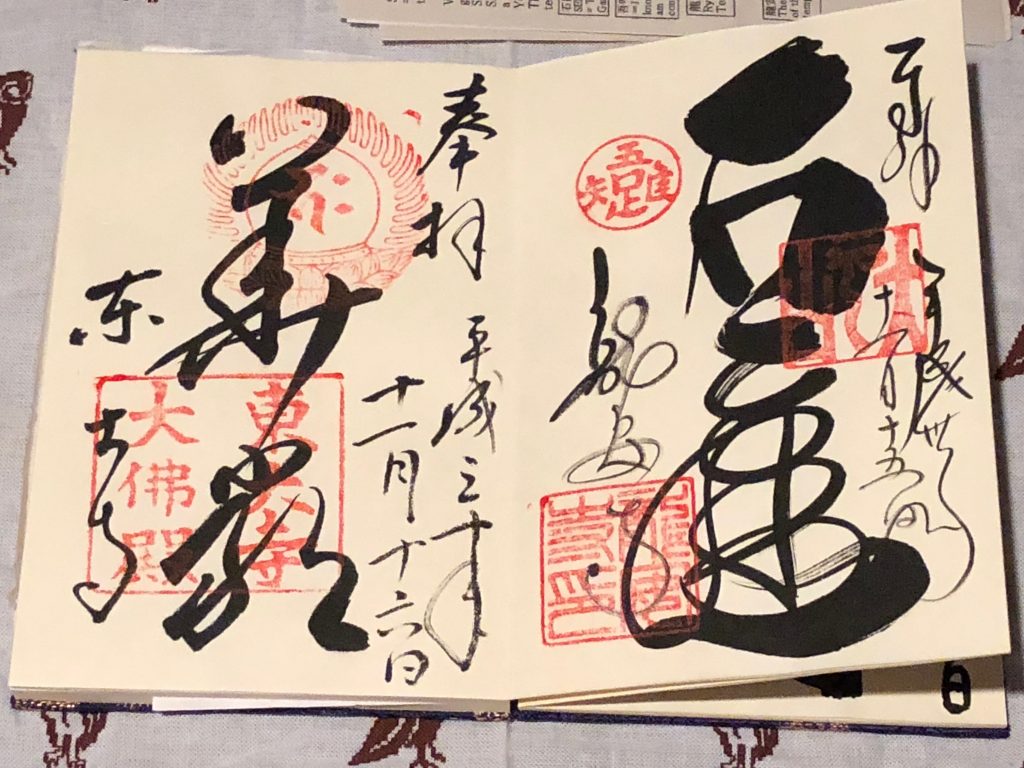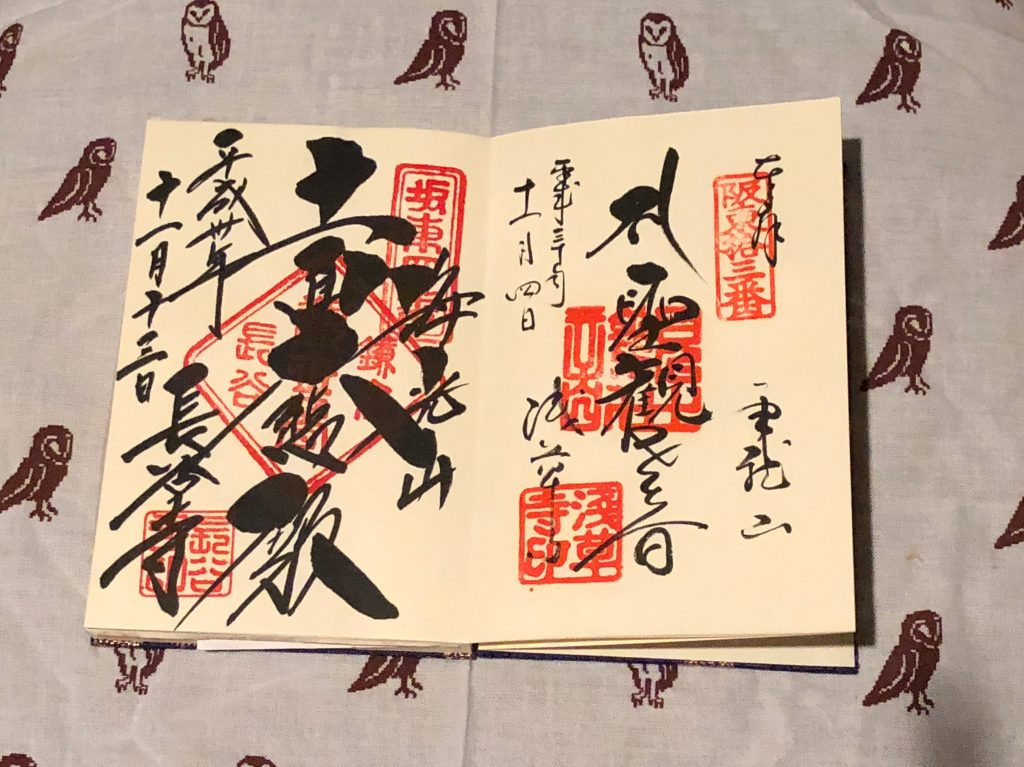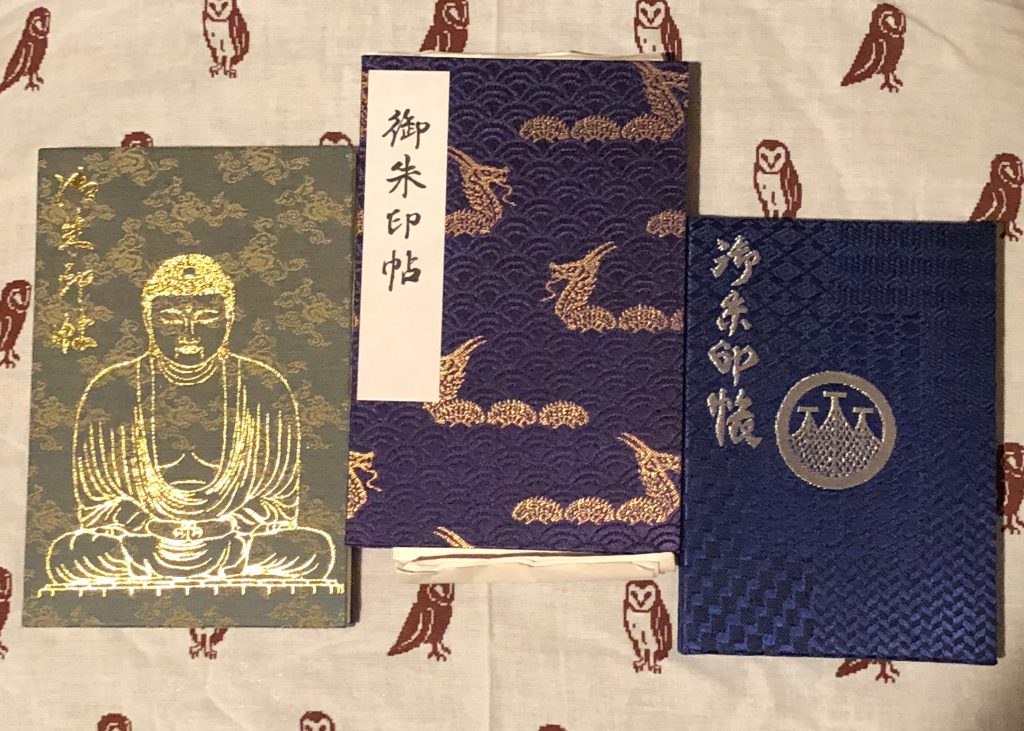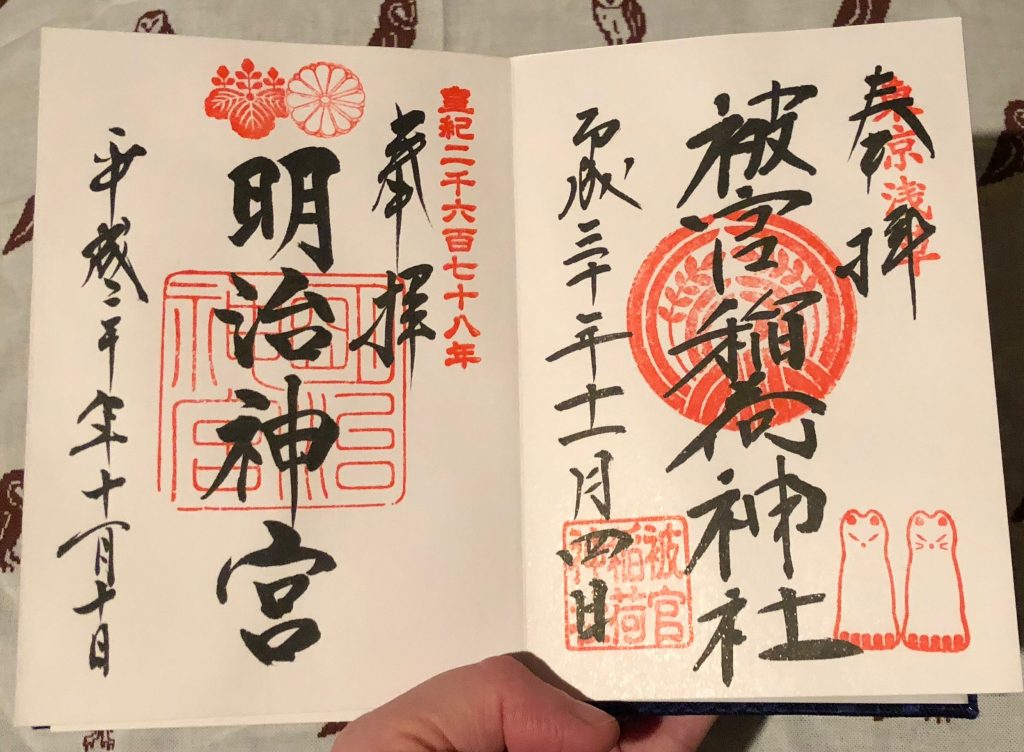Japan, for all its beauty, history, and fun little quirks, is not an inexpensive country. Travelers have long sought out souvenirs from their trip that wouldn’t break the bank, and an unlikely contender has appeared. A relatively cheap and interesting souvenir that’s become very popular in recent years is the goshuinchō, or stamp/seal book. Originally reserved for the devout, goshuinchō have been enjoying widespread popularity, and these days, you’ll probably have a bit of a line for your stamp.
Goshuin (or

Goshuin started out hundreds of years ago as a way to track a pilgrimage. There are many set pilgrimages in Buddhism and Shinto — in other words, you go on a journey to specific temples and/or shrines as a religious ritual. This was popular amongst religious clergy, but also individuals who wanted to find enlightenment or perhaps cure an illness. It doesn’t hurt that religious pilgrimage was one of the only allowed forms of travel during certain eras of Japanese history. These travelers would carry these books with them and get them stamped at each location they visited as proof of their pilgrimage.

Personally speaking, I’m a religious studies scholar, so my goshuinchō are a little more pilgrimage than souvenir. I visited an awful lot of temples and shrines while in Japan, and I had fun getting my books signed wherever we went.
The books themselves range from simple to ornate and can usually be purchased at any shrine or temple that also has a stamping office. (This will be almost all temples and most permanently-manned shrines.) They’re so fun to look at that there are some people who just collect the books and don’t bother filling them with stamps.

A lot of people keep separate books for Shinto shrines and Buddhist temples, but it’s not strictly necessary. (And once I accidentally handed the wrong book to the

(Note: please excuse my hand. Goshuinchō are made with accordion-style pages, so they can be difficult to hold open.)
Some locations will have special paper that can be signed and tucked into your goshuinchō later, but they most likely will not sign sketchbooks, notebooks, etc. that are not specifically designed for the task. It’s important to keep in mind that, though
Whether you’re a pilgrim, a tourist, a collector, or you just like watching them do calligraphy, goshuinchō is a fun activity in Japan if you plan on visiting temples and/or shrines. If you’d like to start your own book, you just have to look for a sign (look for “seal/stamp book”, “


Recent Comments